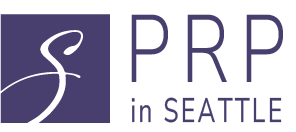Injury on the knee leads to restricted walking and this is the case in torn meniscus which is a common knee injury that can cause pain, swelling, and lack of movement. Earlier, the possible treatments were…
People want to spend less time on recovery and faster results that seems impossible but advancement in medical and cosmetic fields have made it possible. One of the most popular treatments is PRP (Platelet-Rich Plasma) therapy.…
PRP has proven to be one of the best solutions for many health conditions and one of which includes Meniscus tear. It is a common knee injury that often occurs due to sports activity. This condition…
Is stress giving you under-eye shadows that won’t quit? Don’t worry as platelet-Rich Plasma (PRP) therapy is there to beat the stubborn dark circles and fine lines under the eye to give you a more rejuvenated…
Most people are seeking natural treatments for cosmetic and medical purposes. One such treatment is Platelet-Rich Plasma (PRP). It is one therapy that is rapidly gaining popularity due to its effectiveness in promoting natural healing response…
Hip labral tear is an injury which is caused when the cartilage of the hip socket is damaged. The treatment involves physical therapy to reduce pain and in many cases surgery. To avoid undergoing the severity…
Platelet-rich plasma (PRP) facials, also known as "vampire facials," have gained immense popularity in recent years. The procedure promises a rejuvenated skin with enhanced beauty. But while the benefits of PRP facials are widely discussed, one…
Platelet-Rich Plasma (PRP) therapy for the face is gaining popularity due to its natural and long lasting results. It can address aging issues such as fine lines, wrinkles, acne scars, and overall skin texture. This non-invasive…
Platelet-Rich Plasma (PRP) therapy is gaining popularity due to its benefits in both medical and cosmetic fields. The procedure involves taking out a small amount of a patient's blood but have you ever wondered, what roles…
While hair transplant surgery is the first and most important step toward restoring your hair, there’s a lot more you can do after the procedure to help your hair grow. Post-transplant care is so important that…
